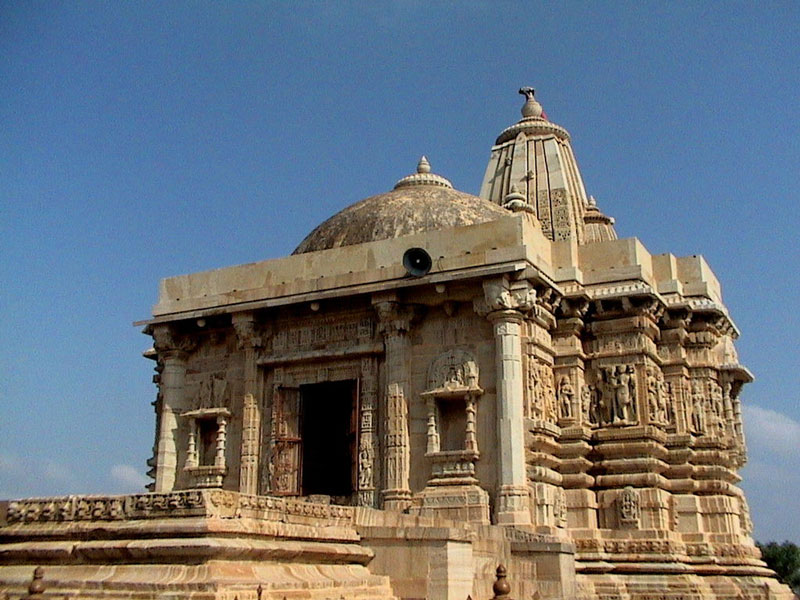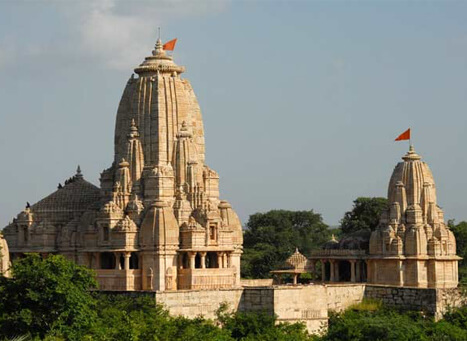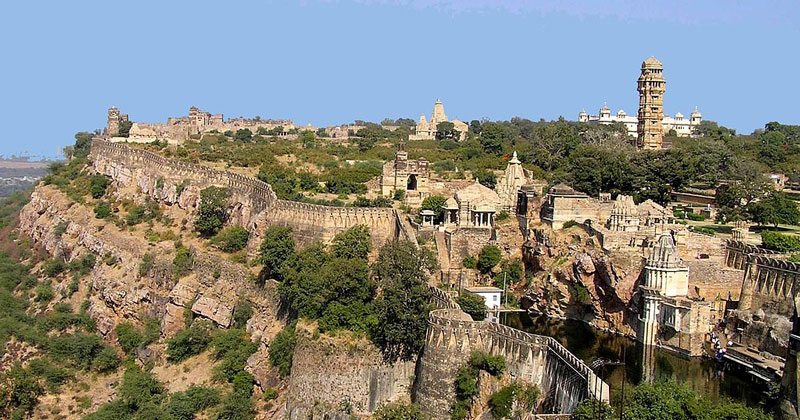ॐ श्री गुरुभ्यो नमः ॐ श्री शिवानन्दाय नमः ॐ श्री चिदानन्दाय नमःॐ श्री दुर्गायै नमः
Source of all Images in this Blog-post : Google Images : ‘Google Image Search’ will reveal the multiple sources of every single image shared here. For more details, kindly see ‘Disclaimer‘
The Chittorgarh Fort also known as Chittorgarh or Chittor Fort is one of the largest forts in India. It is a UNESCO World Heritage Site. The fort was the capital of Mewar and is located in the present-day town of Chittorgarh.
It sprawls over a hill 180 m (590.6 ft) in height spread over an area of 280 ha (691.9 acres) above the plains of the valley drained by the Berach River.
The fort covers 65 historic structures, which include four palaces, 19 large temples, 20 large water bodies, 4 memorials and a few victory towers.
Chittorgarh, located in the southern part of the state of Rajasthan, 233 km (144.8 mi) from Ajmer, midway between Delhi and Mumbai on the National Highway 8 of India. Chittorgarh is situated where National Highways No. 76 & 79 intersect. Read more about the fort in its Wikipedia Page
/GettyImages-500073087-5ba09b5446e0fb0050f96f8b.jpg)



Temples inside Chitthorgarh Fort






Tourism at Chittorgarh
Chittorgarh, also called Chittaur, from the 7th century to the 16th, was the capital of Mewar under the Rajputs. Chittaur evokes memories of great heroism and sacrifice by Rajput men and women in the intermittent battles that they had to fight against invaders from Northwest or Delhi.
Chittaur witnessed both the ravages of war and the triumphs of the spirit.
Allaudin Khilji who coveted Queen Padmini of Chittaur, invaded the city in 1303 A.D. Queen Padmini and the women of the court sacrificed themselves in a pyre of fire rather than submit to anybody. This supreme sacrifice has been called ‘Jauhar’ and epitomises the fiery spirit of the Rajputs of the day.
The city stands strewn with monuments and battlements as evidence of the blood and gore that it went through in medieval times.
The Chittaur Fort is the best known fort in Rajasthan. Its origins are traced to the Pandavas of Mahabharata. It is said that Bhima, one of the Pandava brothers, built the fort.
Standing on 180 meters high hill, the fort covers an area of 700 Acres.
Inside it is the Meera and Khumba Shyam Temple. It is associated with Meera, a mystic poetess devoted to Lord Krishna whose life and bhajans have become part of the folklore and literary traditions of the region and several parts of India.
Fort of Chittorgarh
Chittorgarh (Chittaurgarh) is the epitome of Rajput pride, romance and spirit. It reverberates with history of heroism and sacrifice, which is evident as it echoes with the tales sung by the Bards of Rajasthan.
The main reason for visiting Chittorgarh is its massive hilltop fort, which is a depiction of Rajput culture and values.
The fort of Chittor is regarded as one of the most outstanding forts of the country and is indeed the ‘Pride of Rajasthan State’. The formidable fort is perched atop a 180 meter high hillock covering a massive area of 700 acres and is a standing sentinel to the courage and valour of Chittorgarh.
It is believed that the fort was build by the Mauryans in 7th century and further strucres were added to it by the successive Mewar rulers.
The one mile long serpentine road to the fort is quite steep and exhastive. The fort is approached through seven huge gateways or ‘pols’, which are guarded by watch tower and massive iron spiked doors. Read more about tourism in Chittorgarh
